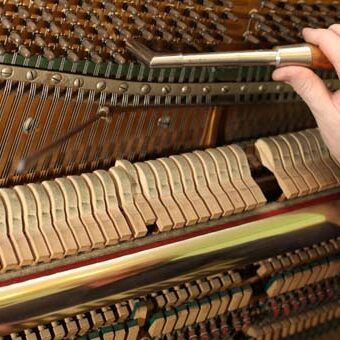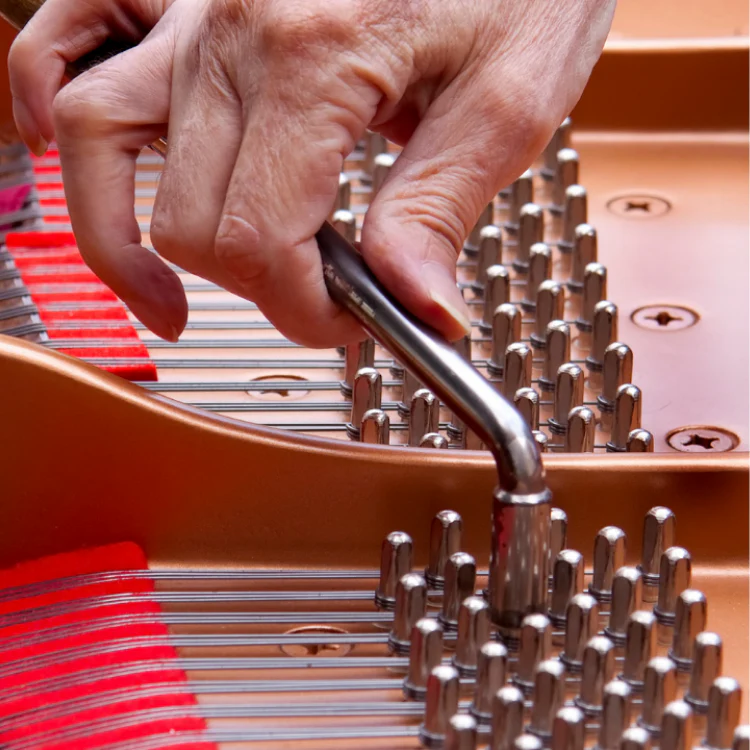Piano tuning is an essential aspect of maintaining the instrument’s quality and ensuring it produces the best sound possible. Whether you’re in Austin or San Antonio, understanding the piano tuning process can help you appreciate the intricacies involved and why it’s crucial to have a professional handle it. In this guide, we will delve into the details of piano tuning, exploring the steps, importance, and why TX Pianos should be your go-to for piano tuning services.
What is Piano Tuning?
Piano tuning involves adjusting the tension of the piano strings to ensure they produce the correct pitch. A piano has over 200 strings, and each one must be precisely tuned to achieve a harmonious sound. The process requires a keen ear, technical skill, and specialized tools to ensure the piano stays in tune for as long as possible.
Why is Piano Tuning Important?
Regular piano tuning is vital for several reasons. Firstly, it maintains the instrument’s sound quality. A piano that is out of tune can sound jarring and unpleasant. Secondly, tuning extends the life of the piano. Regular adjustments prevent excessive tension on the strings and other components, reducing wear and tear. Finally, tuning ensures that the piano is ready for performances, whether it’s for practice, recitals, or concerts.

The Piano Tuning Process
Inspection and Assessment
The first step in the piano tuning process is a thorough inspection and assessment. The piano tuner will examine the condition of the piano, including the strings, pins, and soundboard. This initial evaluation helps the tuner understand the current state of the piano and identify any potential issues that might affect the tuning process.
Pitch Correction
Pitch correction is the next step. If the piano is significantly out of tune, the tuner will need to adjust the pitch to bring it back to the correct level. This involves tightening or loosening the strings to achieve the desired pitch. This step is crucial as it sets the foundation for the fine-tuning process.
Fine-Tuning
Once the pitch correction is done, the tuner will proceed with fine-tuning. This involves making precise adjustments to each string to ensure that the piano is perfectly in tune. The tuner uses a tuning lever and an electronic tuner or tuning fork to achieve this level of precision. The goal is to ensure that each note is accurate and harmonizes well with the others.
Voicing and Regulation
After tuning, the piano may require voicing and regulation. Voicing adjusts the tone of the piano by modifying the hardness of the hammers. Regulation involves adjusting the action mechanism to ensure that the keys respond correctly and consistently. These steps are essential for maintaining the piano’s overall playability and sound quality.
Frequency of Piano Tuning
How often you should tune your piano depends on several factors, including the piano’s age, the environment, and how often it is played. Generally, it is recommended to tune a new piano four times in the first year and then twice a year thereafter. However, pianos in professional settings may require more frequent tuning.

Common Piano Tuning Issues
Environmental Factors
Temperature and humidity can significantly affect a piano’s tuning. Pianos should be kept in a stable environment to minimize these effects. Extreme fluctuations can cause the wooden components to expand or contract, leading to tuning instability.
String Wear and Tear
Over time, piano strings can stretch and lose tension, affecting the pitch. Regular tuning helps to mitigate this issue, but eventually, strings may need to be replaced.
Why Choose TX Pianos?
At TX Pianos, we understand the importance of a well-tuned piano. Our team of professional piano tuners in Austin and San Antonio is dedicated to providing top-notch piano tuning services. We use advanced tools and techniques to ensure your piano sounds its best. Whether it’s for your home, school, or concert hall, you can trust TX Pianos to deliver exceptional results.